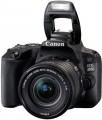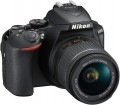DxOMark rating
The result shown by the camera in the DxOMark ranking.
DxOMark is one of the most popular and respected resources for expert camera testing. According to the test results, the camera receives a certain number of points; The more points, the higher the final score.
Total MP
The total number of individual light sensitive dots (pixels) provided in the camera's sensor. Denoted in megapixels - millions of pixels.
The total number of MPs, as a rule, is greater than the number of megapixels from which the frame is directly built (for more details, see "Effective number of MPs"). This is due to the presence of service areas on the matrix. In general, this parameter is more of a reference than practically significant: a larger total number of MPs with the same size and effective resolution means a slightly smaller size of each pixel, and, accordingly, an increased likelihood of noise (especially at high ISO values).
Effective MP number
The number of pixels (megapixels) of the matrix directly involved in the construction of the image, in fact — the number of points from which the captured image is built. Some manufacturers, in addition to this parameter, also indicate the total number of MPs, taking into account the service areas of the matrix. However, it is the effective number of MPs that is considered the main indicator — it is this that directly affects the maximum resolution of the resulting image (see “Maximum image size”).
A megapixel is 1 million pixels. Numerous megapixels ensures high resolution of the captured photos, but is not a guarantee of high-quality images — much also depends on the size of the sensor, its light sensitivity (see the relevant glossary items), as well as hardware and software image processing tools used in the camera. Note that for small matrices, high resolution can sometimes be more of an evil than a blessing — such sensors are very prone to the appearance of noise in the image.
No AA filter
No AA filter in camera design.
The AA filter is responsible for "anti-aliasing" — the elimination of the moiré effect. This effect can occur when shooting objects with a lot of thin horizontal or near-horizontal lines (for example, a brick wall at a great distance, or a suit made of a certain type of fabric). It leads to the appearance of a characteristic pattern in the picture, which, usually, is inappropriate; to eliminate this phenomenon, an AA filter is provided. At the same time, this feature is said to reduce the overall sharpness of the image; therefore, it may not be available in some cameras. These are mainly professional models: the absence of an AA filter gives the photographer additional features, but puts forward increased requirements for shooting skills.
Mount (bayonet)
The type of bayonet mount — mount for interchangeable lenses — provided in a SLR or MILC camera (see "Camera type"). Bayonets come in different sizes, and interchangeable lens specifications usually indicate which mount it is designed for. Most often, mounts of different types are not compatible with each other, but there are exceptions (sometimes directly, sometimes using adapters).
Also note that one brand can use different mounts for different classes of cameras — and vice versa, one mount can be used by several manufacturers. So, Canon releases cameras with mounts
EF-M,
EF-S,
EF and
Canon RF. Leica has
Leica M,
Leica SL,
Leica TL. Nikon has in its arsenal
Nikon 1,
Nikon F,
Nikon Z. Pentax —
Pentax 645,
Pentax K, Pentax Q. Samsung offers
NX and NX-M mounts. Sony cameras have
Sony A and
Sony E, Fuji has
Fujifilm G and
Fujifilm X. And as an example of a mount used by different brands, one can cit
...e Micro 4/3, which is widespread in Olympus and Panasonic cameras.Video scene modes
The number and / or types of scene programs for shooting videos provided in the design of the camera.
Scene programs are a set of presets designed for different shooting situations - for example, in sunlight, on a cloudy day, in a darkened room, etc. Also, this list may include other specific modes - for example, creative tools. In any case, the presence of scene programs facilitates the choice of video shooting parameters, which is very useful for novice users.
File recording formats
File formats in which the camera can record video. Given that the footage is designed to be viewed on an external screen, you should make sure that the playback device (DVD player, media centre, etc.) is able to work with the appropriate formats. At the same time, many camera models themselves can play the role of a player by connecting to a TV via an audio / video output or HDMI (see the corresponding paragraphs of the glossary). And if the video materials are to be viewed on a computer, you should not pay special attention to this parameter at all: problems with format incompatibility in such cases rarely occur, but are usually solved by installing the appropriate codec.
Maximum video length
Restrictions on the length of the recorded video provided in the design of the camera. In some models, the recording time is limited in time (for example, 30 minutes) — thus, to record a longer video, it will have to be split into separate clips. In others, the duration depends only on the amount of free memory — you can record as long as there is enough space. There is also a combination of these options; in such models, video recording stops as soon as either of the two limits is reached.
Focus points
The number of focus points (autofocus) provided in the design of the camera.
The focus point is the point (more precisely, a small area) in the frame from which the autofocus system reads data for focusing. The simplest systems work with a single point, but their capabilities are very limited, and this option is practically not found today. Modern digital cameras have at least three focus sensors, and in the most advanced models this figure can reach several dozen.
The more autofocus sensors there are in the camera, the more advanced its autofocus capabilities will be, the more specific techniques it allows you to use. In this case, the selection of specific points used can be carried out both automatically, simultaneously with the choice of the subject program, and manually (however, the second option is more typical for professional cameras). In addition, the abundance of focus points has a positive effect on the quality of the tracking autofocus (see "Autofocus Modes").
In general, more focus sensors are generally considered a sign of a more advanced camera; however, differences in quality become really noticeable only if the difference in the number of points is significant - for example, if we compare models with 9 and 39 points. A lot also depends on the location of the points in the frame - it is believed that sensors distributed over a wide area work better than densely located in the center of the frame, even if their number is the same.

